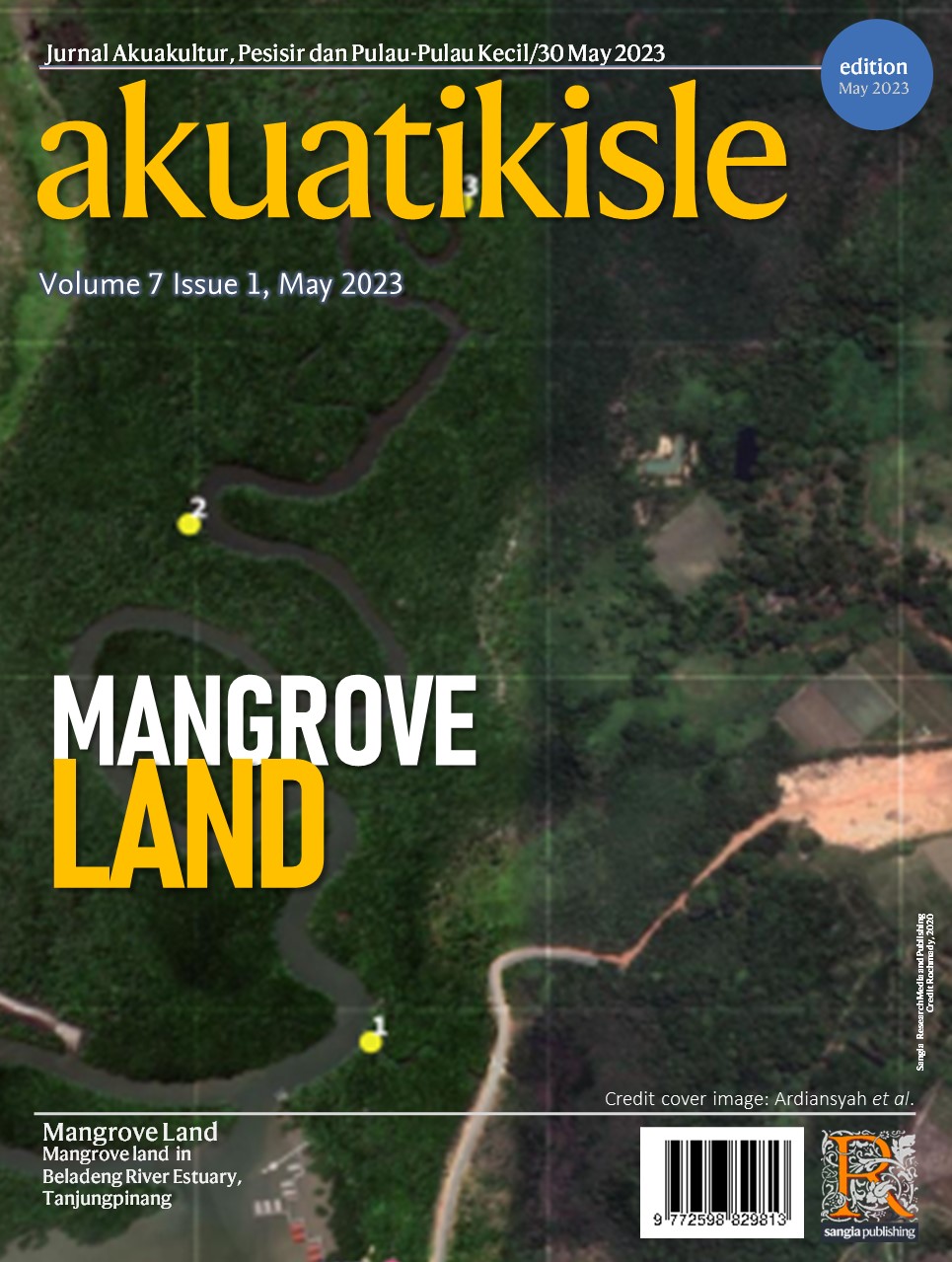Akuatikisle: Jurnal Akuakultur, Pesisir dan Pulau-Pulau Kecil
Full Length Article
Sea urchins in the intertidal zone on Karanrang Island, Pangkep Regency; Density, abundance, community structure, and distribution patterns
Highlights
Generate NLP AI by Wizdam ID.
Abstract
Sea urchins were ecologically and economically important biota, but scientific information on sea urchins is still very minimal and there is no ongoing monitoring. The purpose of this study was to determine the density, abundance, community structure, and distribution patterns of sea urchins in the intertidal zone of Karanrang Island, Pangkep Regency. The research in June-July 2022 was carried out at high and low tide using three transects measuring 1 x 1 m consisting of four plots measuring 50 x 50 cm. Determination of stations based on information from local residents to get observation stations based on tidal conditions. The results showed that three species of sea urchins from two families were found, namely Diadema setosum, Echinothrix calamaris, and Tripneustes gratilla. The species of D. setosum was found to be very abundant (97.3-97.6%) and tended to be more abundant during high tide than during low tide. The index of diversity and uniformity of porcupine species is low (H' = 0.130-0.142 and E = 0.118-0.129). The species dominance index was in the range of 0.946-0.953 indicating high dominance of D. setosum. Spatially, D. setosum had a uniform distribution pattern, whereas E. calamaris and T. gratilla were distributed in clusters. Further spatial and temporal research is needed to comprehensively determinant the conditions of the sea urchin population on Karanrang Island, Pangkep Regency.
Keywords
Introduction
Section snippets
Material and Methods
Materials and methods from the full-text PDF of this article cannot be displayed.
Results
Results from the full-text PDF of this article cannot be displayed.
Discussion
Discussion from the full-text PDF of this article cannot be displayed.
Conclusions
Conclusions from the full-text PDF of this article cannot be displayed.
Acknowledgment
Acknowledgment from the full-text PDF of this article cannot be displayed.
Competing interest
The authors declare that they have no known competing financial interests or personal relationships that could have appeared to influence the work reported in this paper.
Conflict of interest
The authors declare that the research was conducted in the absence of any commercial or financial relationships that could be construed as a potential conflict of interest.
Ethical approval acknowledgements
No ethical approval required for this article. All procedures followed were in accordance with the ethical standards of the responsible committee on human experimentation (institutional and national) and with the Helsinki Declaration of 1975, as revised in 2008 (5)
Supplementary files
Data sharing not applicable to this article as no datasets were generated or analysed during the current study, and/or contains supplementary material, which is available to authorized users.
Bibliographic Information
Cite this article as:
-
Submitted
4 March 2023 -
Accepted
5 May 2023 -
Published
7 May 2023 -
Version of record
29 May 2023 -
Issue date
30 May 2023
-
Academic subject
Marine Sciences
Copyright
Copyright © 2023 Sri Nursyarina Fitri, Hartati Tamti, Mesalina Tri Hidayani, Heriansah. Sangia Research Media and Publishing. Production and hosting by Sangia (SRM™).  This work is licensed under a Creative Commons Attribution-ShareAlike 4.0 International License.
This work is licensed under a Creative Commons Attribution-ShareAlike 4.0 International License.
Disclaimer: All claims expressed in this article are solely those of the authors and do not necessarily represent those of their affiliated organizations, or those of the publisher, the editors and the reviewers. Any product that may be evaluated in this article or claim that may be made by its manufacturer is not guaranteed or endorsed by the publisher.
Comments on this article
By submitting a comment you agree to abide by our Terms and Community Guidelines. If you find something abusive or that does not comply with our terms or guidelines please flag it as inappropriate.


